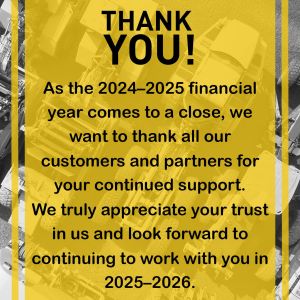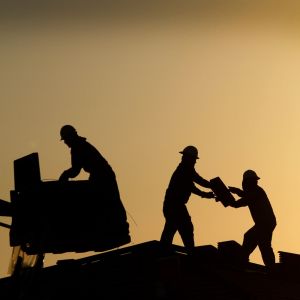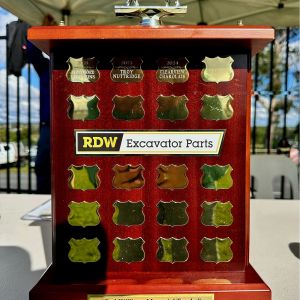Several miners are divesting non-core operations so they can concentrate on running their other ones better. Bigger has proved not always better. As highlighted in my June article (click here), many of our Miners have been working for about 2 years now on improving their cost structures, but still need to slash costs by a third just to match the second most expensive country.
How are our Miners doing?
Australian Mining companies are going through their annual reporting, with announcements of record production and overall fairly good results considering the falling commodities market. Well, sort of. As new mines come on line, our production volumes have increased, and hence so has turnover. Several miners are divesting non-core operations so they can concentrate on running their other ones better. Bigger has proved not always better. As highlighted in my June article (click here), many of our Miners have been working for about 2 years now on improving their cost structures, but still need to slash costs by a third just to match the second most expensive country.
Since writing that article, two further studies have been released on Australian Mining Productivity. Ernest and Young (EY) studied labour productivity in Australia. They found that productivity had declined by roughly half between 2001 and 2012. That is, per hour worked on our sites, we were shipping out half as much in tonnes. In another study, Price Waterhouse Coopers (PWC) analysed equipment usage at 136 mines over 5 continents. Australia had better equipment productivity than Africa, but was behind South America, Asia and about 30% below North America. From 2006 to 2013, Australia’s equipment productivity for open cut mining equipment fell 18%. Investment in new earthmoving equipment increased 17% annually, but output increases didn’t follow. The report identified several reasons for this, including:
- that benchmarking was based on how much was produced compared to the prior year without considering how it was done (and what it cost),
- for a period some mines were forced to acquire equipment that was available rather than what they really needed.
- Talent shortages meant less skilled persons were used to run the equipment.
- In some instances, similar mines in similar locations had almost half the productivity of others. They should ask themselves why.
I’d add that a major cost of machinery is depreciation and interest costs, and many times there are cost savings available by maintaining existing machinery rather than replacing it with new. RD Williams can help with providing excellent used machines to overcome these cost problems. We can also help reduce another major cost (maintenance) by providing you with competitive top-quality parts and components to help give you an edge. Smart businesses are making these adjustments now, and as an Industry, we should be able to right some of these issues, so we have a strong and sustainable Mining industry for the future.
Bad news sells, while good news stays under the sheets!
Reading the daily paper is depressing. The covers are dominated by negative headlines. But when you look under the sheets, there are largely positive messages out there. Here are some, in case you fell for the shock titles:
- 109,900 new jobs have been created in Australia in the seven months from January 2014. The reason the Unemployment rate increased is due to changes to the participation rate, that is, trying to get people off welfare and into meaningful employment.
- Inflation is steady, interest rates have been at record lows and are expected to stay there, Business lending is up 12.1%, and construction lending is up 7.6% in the last year.
- Dwelling approvals rose 16% last year. Dwellings started were 48,964 in the March quarter, the highest level since records began 30 years ago.
- ANZ’s job ads index has risen for the last 9 months in a row. The stock market has risen 17% last year, and national capital city house prices 10.2%.
- Employment numbers in the Australian Mining Industry have increased by 106,700 jobs in the five years to May 2014. We hear about all the jobs being lost, but not about the ones being created. Qld was up 28,400, of which 9,900 were added in the last two years, largely in the LNG industry. As the transition from Construction to Production finishes, 16,000 jobs across Australia are expected to disappear by 2018, but contrary to popular headlines, this still means the sector has added over 90,000 jobs over the last decade.
Not everything is positive of course. Business and Consumer confidence is below where it should be (but improving) because we are sick of political games, and we could do with more Infrastructure investment actually kicking off. There is also something wrong when the highest average wages in our capital cities are in Canberra because of (as the Australian Bureau of Statistics said) “the high proportion of public sector workers, who traditionally earn more than those in the private sector”. Maybe EY or PWC could look at turnover and productivity here too? (and I wasn’t thinking of number of pieces of paper produced).
Our own Power Station
The Carlsson Family has now become the proud owner of our own Power Station! With the household roof now “decorated” with this fashionable household accessory, we “look forward” to receiving our next power bill. I’ve never believed in buying into Government induced markets (look at Pink Batts, Water Tanks etc for other examples) because the schemes distort markets, bring in shonks, and can be changed at any time.
One of the leading power suppliers completed a study recently that found some areas where shoddy installers had been active had as many as 30% of the new systems faulty, with most owners none the wiser. In another study, the Sydney Olympic village which was one of the first places (before 2000) in Australia to install solar systems (certainly on a larger scale), a recent investigation found 25% of those systems were no longer operational. When owners were notified of the failure, only 11% made repairs (mainly inverter failures). These systems were small (0.5-1kW), hence possibly why the owners hadn’t noticed they weren’t working, and inverter technology has now improved.
So why did we do it now, when the schemes are largely wrapped up? Well, compared to the price we obtained about 3 years ago, we now bought a system twice the size for half the money. I have no doubt system prices will continue to fall as technology improves and the market matures, but the decision to do it now was that overall Australia is reducing its Power Consumption, and with more people on this scheme, the overcapacity in the market will fall on a smaller number of users, hence excessive future price rises are almost guaranteed. We designed the system to match our usage (facing East and West, not North – giving more power in mornings and afternoons when we consume more). Whilst it is still winter, performance so far is that the 5.5kW system gives between 15 and 20kWh per day, or probably making me a cup of coffee each day (about $4 – maybe it sounds more impressive to say $1,500 per year, but I like my coffee). It’ll be a bit more in summer, so I believe the true payback time all costs included will be about 5 years, which means an annual return of 20%, much better than the interest you can get in the bank.
Clearly, with over 1 million Australian households now having solar panels, I’m not an early adopter in this field. And proud of it. It makes more sense for businesses to get solar (that generally operate at the times when the panels produce power). The problem is that the building owner (who would generally install the system) and the business owner (who gets the ongoing benefit) are usually separate entities.
Blood sucking parasites?
For about a year now, RD Williams have had the Red Cross Blood Service come to our site so our staff and local businesses can donate blood to help those in need. We are now broadening the initiative by also inviting all our valued customers to join us any time on Monday the 1st of September. Please contact Samantha on 3875 1358 to make arrangements, and let the Red Cross suck your blood!
As always, onwards and upwards!
Fred Carlsson
General Manager



